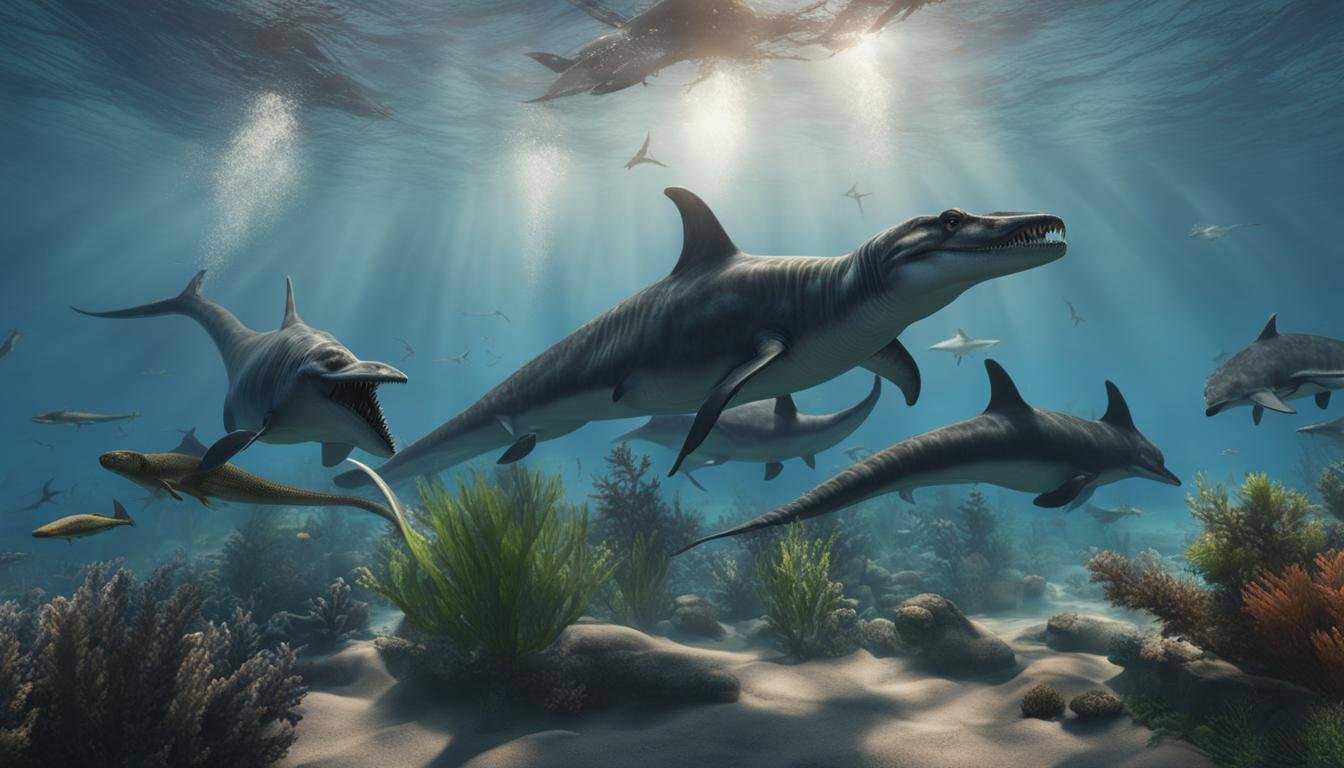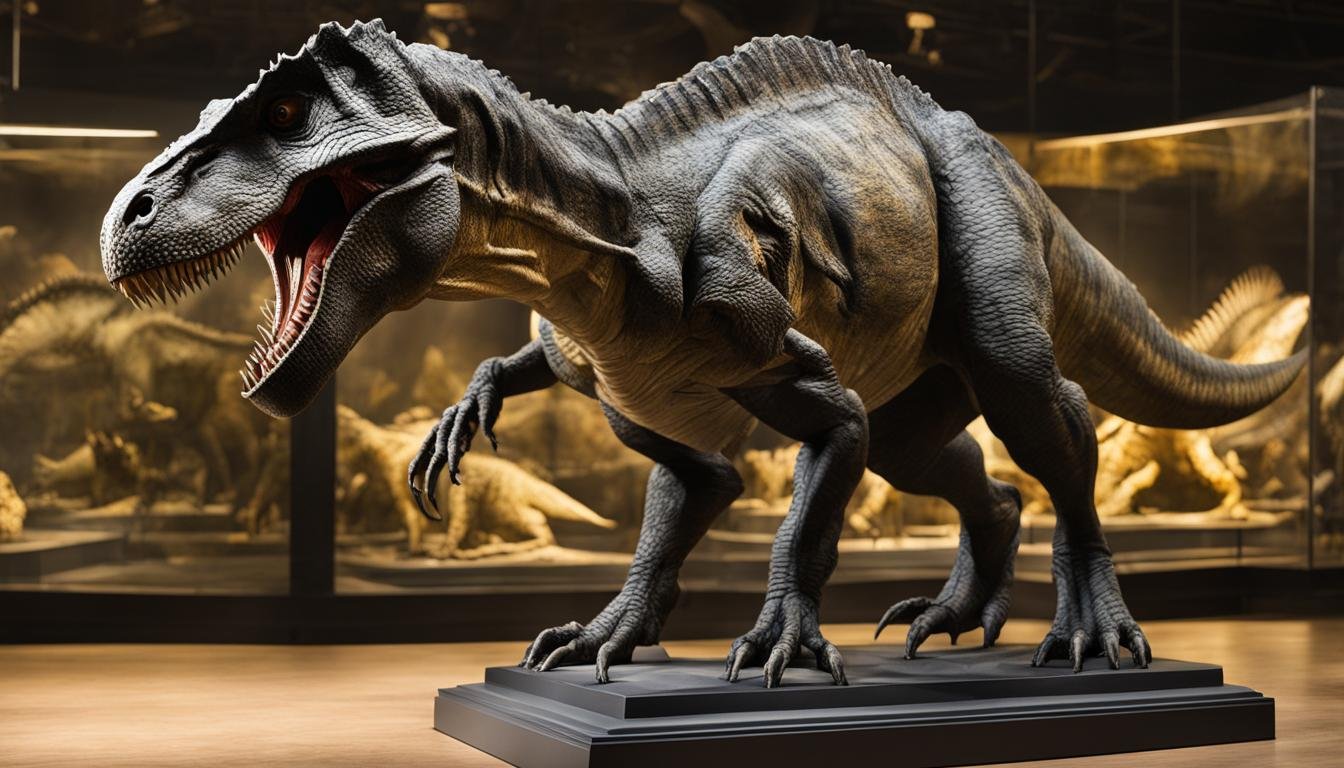Dinosaurs, a name that conjures images of colossal, majestic creatures roaming the Earth millions of years ago. These beings, from the ferocious Tyrannosaurus Rex to the gentle Brachiosaurus, have long fascinated us. But here’s a thought that might not cross your mind often: could dinosaurs swim?
| Key Takeaways | Details |
|---|---|
| Dinosaur Swimming Abilities | – Most dinosaurs could likely swim to some extent. – Abilities varied greatly among species. |
| Swimming Techniques | – Techniques varied based on body structure. – Tail propulsion and dog paddle likely methods. |
| Breathing While Swimming | – Dinosaurs likely swam near the surface for easy breathing. – Some may have dived briefly. |
| Reasons for Swimming | – To escape predators. – To cross rivers and lakes. – To hunt aquatic prey. |
| Long-Distance Swimming | – Species like Spinosaurus could swim long distances. |
| Factors Affecting Swimming Ability | – Body size and shape. – Limb length and proportions. – Tail shape and length. – Lung capacity. |
| Evidence of Swimming | – Fossil trackways. – Chemical analysis of bones. – Fossils with aquatic prey remains. |
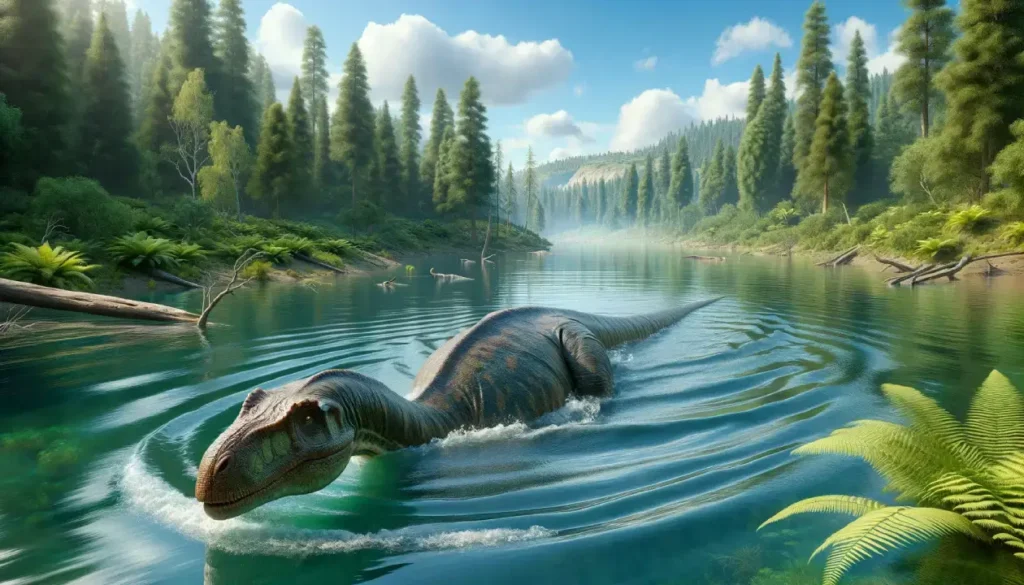
Could All Dinosaurs Swim?
Imagine a massive T-Rex paddling through a river or a Triceratops taking a leisurely swim. Sounds fascinating, right? The truth is, most dinosaurs probably had some ability to swim, at least to a certain extent. However, like animals today, their swimming abilities likely varied greatly.
Key Points:
- Diverse Abilities: Just as birds (dinosaurs’ modern-day descendants) vary in their swimming capabilities, so too did dinosaurs.
- Survival Skills: Swimming, even at a basic level, could have been crucial for survival, especially when faced with natural barriers like rivers or predators.
So, when we think of dinosaurs, we shouldn’t limit our imagination to land-only scenarios. These magnificent creatures might have been more versatile than we give them credit for. But, as with all things prehistoric, the water is muddied with uncertainties and ongoing discoveries.
How Did Dinosaurs Swim?
When we imagine dinosaurs swimming, we must consider their size, shape, and potential movement in water. It’s a fascinating exercise in paleontological deduction.
What Swimming Strokes Would Dinosaurs Have Used?
Given their varied body structures, dinosaurs likely employed different swimming techniques.
- Tail Propulsion: For large, long-tailed dinosaurs like the Spinosaurus, tail propulsion would have been a likely method. This involves using their tails as paddles to push through water, similar to crocodiles today.
- Dog Paddle: Smaller or less aquatic dinosaurs might have used a simple dog-paddle style, using their limbs to move in water.
The key here is adaptability. Each species would have developed a swimming style suited to its body structure and lifestyle.
How Did Dinosaurs Breathe While Swimming?
Breathing while swimming is a challenge for many animals, and it would have been for dinosaurs too.
- Surface Breathing: Like many modern reptiles, dinosaurs likely swam close to the water surface, allowing them to breathe easily.
- Dive and Surface: Some might have been capable of short dives, holding their breath before resurfacing for air.
Why Did Dinosaurs Swim?
Swimming, for dinosaurs, was likely a matter of necessity and survival.
- Escape Predators: Water can be a safe haven from land-based threats. A swift swim could mean the difference between life and death.
- Cross Rivers and Lakes: To access new territories or during migration, crossing water bodies would have been essential.
- Hunt Aquatic Prey: For those like Baryonyx, aquatic environments provided a rich source of food.
In essence, swimming abilities in dinosaurs were as much about survival as they were about exploiting available resources. Whether it was the need to escape, explore, or eat, swimming played a pivotal role in the lives of these ancient giants.
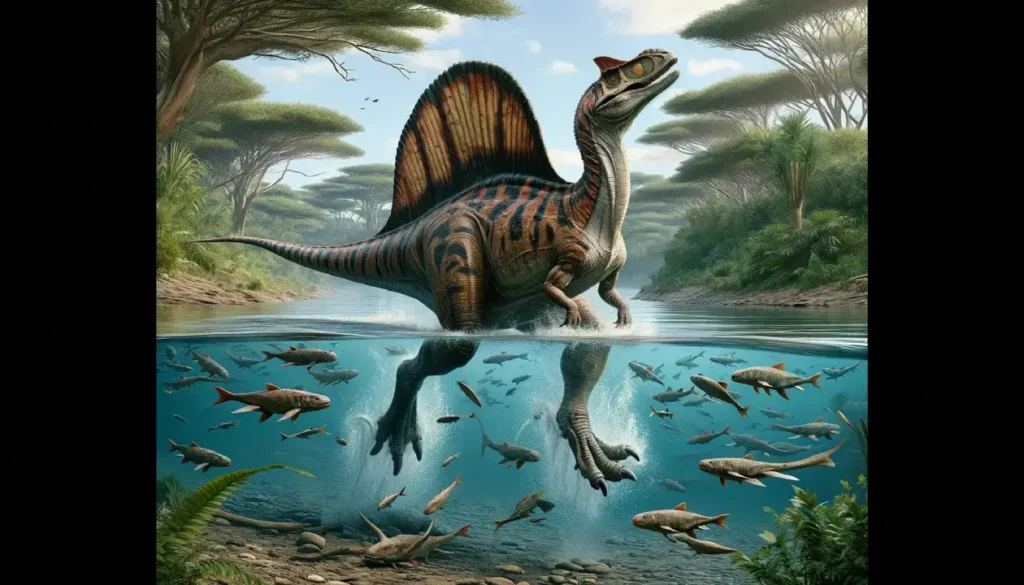
Did Dinosaurs Swim Long Distances?
While not all dinosaurs were adept at swimming, some species like the Spinosaurus are believed to have been capable of swimming over long distances. This ability would have greatly influenced their behavior, habitat range, and even their hunting strategies.
- Spinosaurus: Evidence points to this dinosaur being a powerful swimmer, possibly covering extensive areas in search of food or habitat. Their physical adaptations support this theory, with features ideal for an aquatic lifestyle.
What Factors Would Have Affected How Well a Dinosaur Could Swim?
Several physical characteristics would have played a crucial role in determining a dinosaur’s swimming ability.
- Body Size and Shape:
- Larger dinosaurs might have had more difficulty maneuvering in water, while smaller ones could have been more agile.
- The overall body shape would affect buoyancy and stability in water.
- Limb Length and Proportions:
- Longer limbs could provide more propulsion, but their effectiveness also depended on muscle strength and limb flexibility.
- Shorter limbs might have been a disadvantage in open water but useful in shallow waters.
- Tail Shape and Length:
- A long, muscular tail like that of the Spinosaurus could have served as an effective paddle, aiding in propulsion.
- Shorter tails would offer less aid in swimming but might not hinder movement in shallow waters.
- Lung Capacity:
- Larger lung capacity would allow dinosaurs to hold their breath longer underwater, enabling them to dive deeper or swim for longer periods without needing to surface for air.
Understanding these factors gives us a glimpse into how these prehistoric creatures might have interacted with their aquatic environments, adapting and evolving to meet the challenges of their habitats.
Evidence That Suggests Some Dinosaurs Were Active Swimmers
The notion of swimming dinosaurs isn’t purely speculative; there’s concrete evidence supporting this intriguing aspect of their behavior.
- Fossil Trackways:
- Some fossilized footprints and trackways suggest swimming motions, where only the tips of toes touched the sediment, indicating movements made in water.
- Chemical Analysis of Bones:
- Studies involving isotopic analysis of dinosaur bones have revealed patterns consistent with those of aquatic animals, suggesting these dinosaurs spent significant time in water.
- Fossil Evidence of Aquatic Prey Consumption:
- The discovery of fish and other aquatic animals in the stomach contents of certain dinosaur fossils strongly indicates that these dinosaurs were adept at catching and eating aquatic prey.
This evidence paints a picture of a more dynamic and adaptable dinosaur than previously imagined, capable of thriving in both terrestrial and aquatic environments.
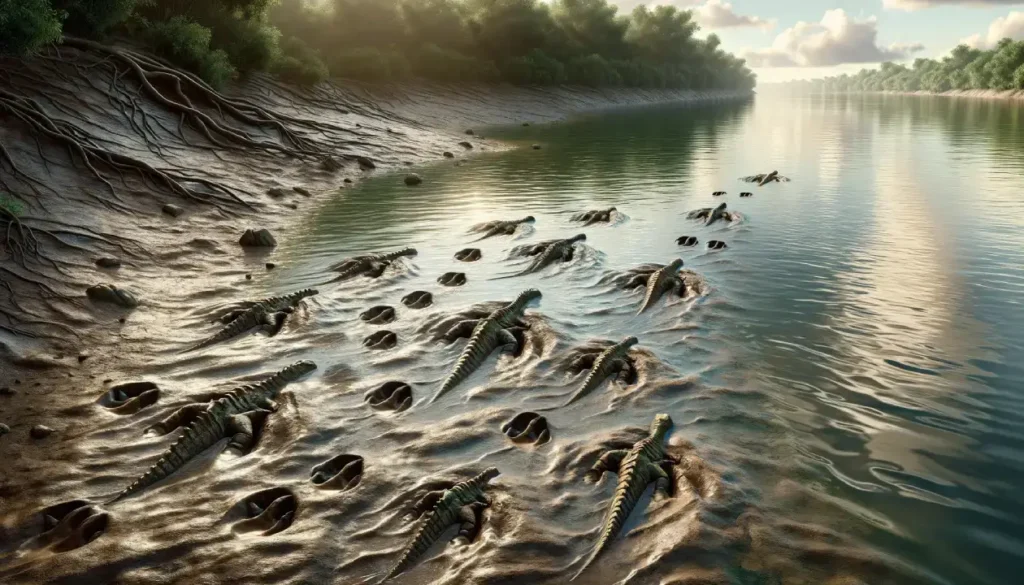
Examples of Dinosaurs That Were Likely Good Swimmers
Several species of dinosaurs are believed to have been particularly adept at swimming, based on their physical traits and fossil evidence.
- Spinosaurus:
- Perhaps the most famous aquatic dinosaur, the Spinosaurus, had a body built for swimming, with a crocodile-like snout and paddle-like tail.
- Baryonyx:
- This dinosaur’s remains often include fish scales and bones, indicating a diet that involved aquatic hunting.
- Halszkaraptor:
- Its body structure, including flipper-like limbs and a long neck, suggests it was adapted for a semi-aquatic lifestyle, similar to modern water birds.
- Natovenator:
- This smaller dinosaur, related to the Velociraptor, had features indicating it could swim, possibly to hunt small fish or other aquatic creatures.
These dinosaurs show a remarkable adaptation to their environments, challenging our traditional view of dinosaurs as purely land-dwelling giants and revealing a fascinating aspect of prehistoric life.
Examples of Dinosaurs That Were Probably Not Very Good Swimmers
While evidence points to some dinosaurs being adept swimmers, others, due to their body structure, were likely less suited for aquatic endeavors.
- Sauropods:
- These massive, long-necked dinosaurs, such as the Brachiosaurus, likely found it challenging to swim due to their enormous size and weight.
- Stegosaurs:
- With their heavy, armored plates and spikes, stegosaurs like Stegosaurus would have been less agile in water.
- Ankylosaurs:
- Known for their armored bodies and clubbed tails, ankylosaurs were likely too heavy and rigid for effective swimming.
These dinosaurs, adapted for life on land, would have found navigating aquatic environments a daunting, if not impossible, task.
Conclusion
In conclusion, the prehistoric world was as varied and complex as our modern one, with different dinosaur species adapting to their environments in diverse ways. Evidence such as fossil trackways, chemical analysis of bones, and dietary habits indicate that some dinosaurs were not only capable of swimming but may have thrived in aquatic environments.
On the other hand, factors like body size and shape, limb proportions, and lung capacity played a significant role in determining a dinosaur’s swimming ability. Dinosaurs like Spinosaurus and Baryonyx likely excelled in aquatic settings, while sauropods, stegosaurs, and ankylosaurs were more suited to life on land.
This exploration into the swimming abilities of dinosaurs not only enriches our understanding of these ancient creatures but also highlights the incredible adaptability and diversity of life on Earth, both past and present.






